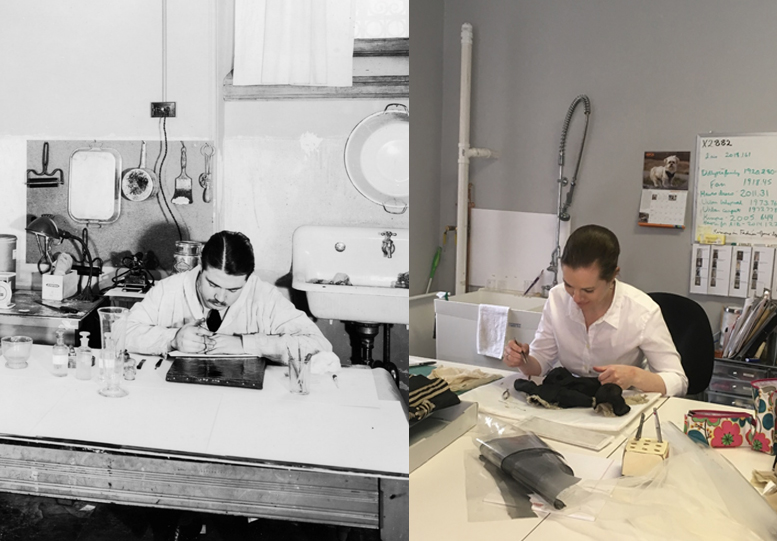- Events & Programs Home
- Calendar
- Accessibility
- Adults
-
Families & Teens
- Families & Teens Home
- 10x10 Teen Art Expo
- Art on the Rise
- Art Together: Art Making for Families with Children Ages 3–5
- Babies Sing with May Festival Minis
- Boy Scouts / Girl Scouts
- CAM Kids Day
- Family Storytime and Gallery Walk
- Family Studio: Art Making for Families with Children Ages 6–12
- Games in the Galleries
- Members-Only Baby Tours
- Public Baby Tours
- REC Reads
- Rosenthal Education Center (REC)
- Saturday Morning Art Class
- See Play Learn Kits
- Summer Camp
- Teen Fest: Zine and Comic Exchange
- RECreate
- Teachers
- Community Outreach
- Fundraisers
- Plan Your Own Event

- Events & Programs Home
- Calendar
- Accessibility
- Adults
-
Families & Teens
- Families & Teens Home
- 10x10 Teen Art Expo
- Art on the Rise
- Art Together: Art Making for Families with Children Ages 3–5
- Babies Sing with May Festival Minis
- Boy Scouts / Girl Scouts
- CAM Kids Day
- Family Storytime and Gallery Walk
- Family Studio: Art Making for Families with Children Ages 6–12
- Games in the Galleries
- Members-Only Baby Tours
- Public Baby Tours
- REC Reads
- Rosenthal Education Center (REC)
- Saturday Morning Art Class
- See Play Learn Kits
- Summer Camp
- Teen Fest: Zine and Comic Exchange
- RECreate
- Teachers
- Community Outreach
- Fundraisers
- Plan Your Own Event
Blog: CAM Uncovered
Blog: CAM Uncovered
- Home
- Plan Your Visit
- Art
-
Events & Programs
- Events & Programs Home
- Calendar
- Accessibility
- Adults
-
Families & Teens
- Families & Teens Home
- 10x10 Teen Art Expo
- Art on the Rise
- Art Together: Art Making for Families with Children Ages 3–5
- Babies Sing with May Festival Minis
- Boy Scouts / Girl Scouts
- CAM Kids Day
- Family Storytime and Gallery Walk
- Family Studio: Art Making for Families with Children Ages 6–12
- Games in the Galleries
- Members-Only Baby Tours
- Public Baby Tours
- REC Reads
- Rosenthal Education Center (REC)
- Saturday Morning Art Class
- See Play Learn Kits
- Summer Camp
- Teen Fest: Zine and Comic Exchange
- RECreate
- Teachers
- Community Outreach
- Fundraisers
- Plan Your Own Event
- Give & Join
- About
- Tickets
- Calendar
- Exhibitions
- Collections
- Blog
- Shop
Behind the Scenes in Conservation: Conservation History
by Conservation
11/21/2019
conservation , women breaking boundaries , conservation history , power of her , CAM archives , behind the scenes

At first glance, not much has changed in the Cincinnati Art Museum’s conservation labs between when the left picture was taken in January, 1940, and when the right one was taken in March, 2019! CAM is proud to have one of the oldest art conservation labs in the country which started with a single, part-time paintings conservator in 1935. When this archival picture was taken about 5 years later, conservation as we know it today was still a field in its infancy, but you can already see hints of the philosophy and practice behind conservation that continue to guide modern conservators.
Our 1940 counterpart works in a tidy, lab-like space, surrounded by scientific glassware for measuring and storing solvents and other materials. There is a counter with a sink and other instruments on the wall behind him. In today’s textile conservation lab, his modern counterpart works in a remarkably similar space. The sink behind her is equipped to produce super-pure deionized water and the tools surrounding her include stainless steel tweezers, spatulas, micro-scissors (tiny spring-loaded scissors for cutting fine materials) and a small roll of silk fabric with adhesive in it for caring for the historic doll clothes on the bench.
As with all professional fields, however, a great deal has changed in the conservation lab between 1940 and 2019 that might not be so easy to see. Conservators have been studying and working to develop new, better interventions for caring for all kinds of artwork and we are constantly refining and improving our techniques and materials. Our 1940 counterpart would probably have recognized some of things our 2019 conservators do, but others would have been totally foreign to him. The conservation department at the museum has also expanded, and the lab on the right is now one of 3 conservation spaces at CAM which house a total of 4 full-time conservators, one each in objects, paintings, paper and textiles. All of CAM’s current conservators have graduate degrees in conservation and they are also all women –two facts that might have made our 1940 counterpart sit up from his workbench in surprise.
Cincinnati, OH 45202
Toll Free: 1 (877) 472-4226
Museum Hours
Museum Shop
Terrace Café
Library
Cincinnati Art Museum is supported by the tens of thousands of people who give generously to the annual ArtsWave Campaign, the region's primary source for arts funding.

Free general admission to the Cincinnati Art Museum is made possible by a gift from the Rosenthal Family Foundation. Exhibition pricing may vary. Parking at the Cincinnati Art Museum is free.
Generous support for our extended Thursday hours is provided by Art Bridges Foundation’s Access for All program.

General operating support provided by:



